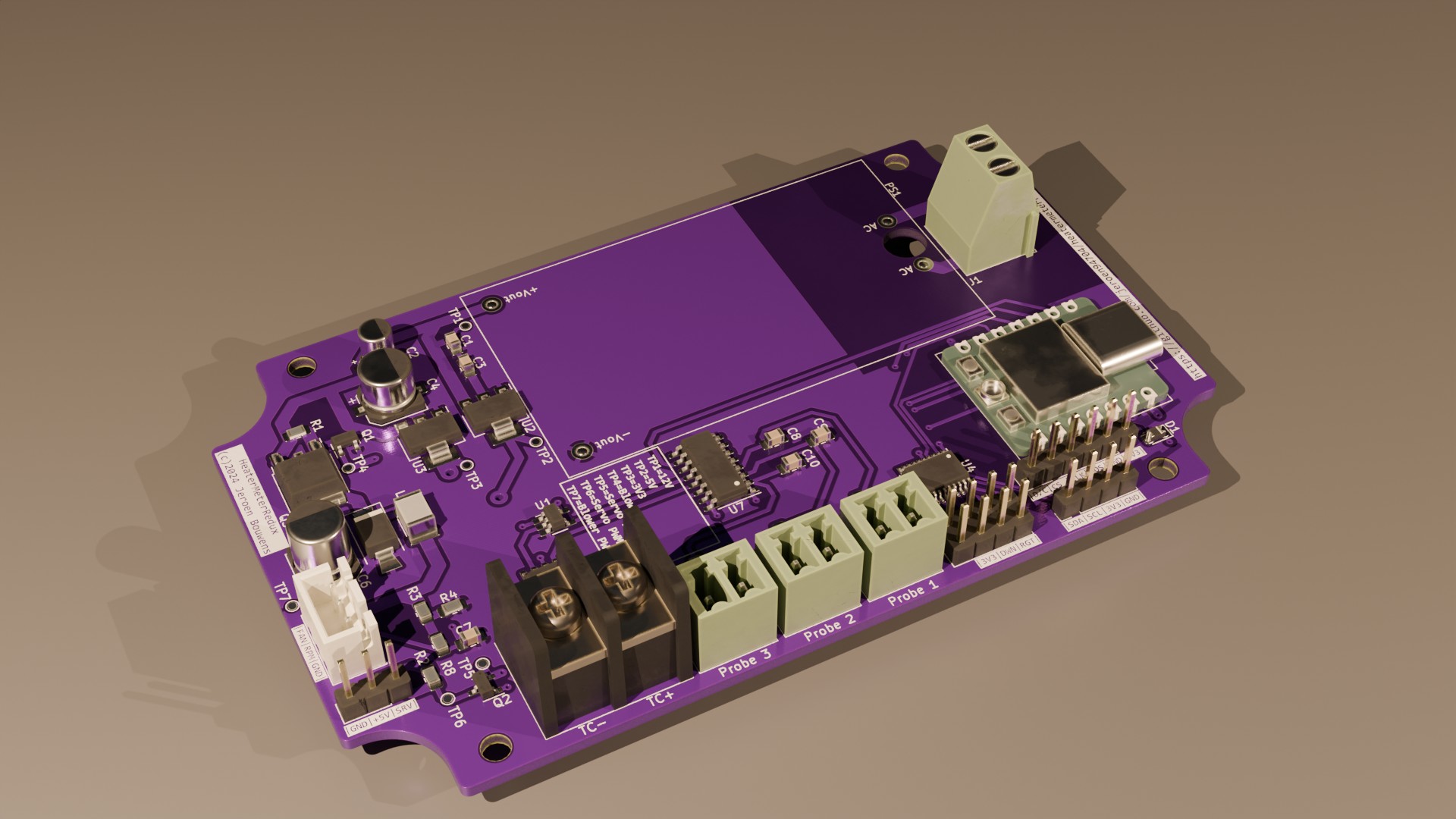Jeroen's Project Journals
Kamado temperature controller

A WiFi-enabled temperature controller for my Kamado BBQ
- Gallery
Introduction
2024-02-01
Almost a year ago I (finally, after agonizing over the price for years!) bought a Kamado barbecue. Granted, it’s a display model and it’s not from one of the pricier, well-known brands (Big Green Egg, The Bastard or Kamado Joe), but it’s mine, and I enjoy using it. Apart from the usual burgers and steak it lets me cook delicious pulled pork (cooks VERY slowly at low temps) and the absolute best home-made pizza! However, while the strength of a Kamado is precise and stable temperature control this is also quite fussy to get right. For something like pulled pork, which has to cook for many hours, it requires keeping a close eye on the temperature all day long. For pizza you need to cherry-pick the largest chunks of charcoal to ensure sufficient airflow, or else the Kamado won’t reach the required high temperatures.
One way to make this easier is a temperature controller. These work by measuring the temperature inside the dome and controlling the airflow by restricting the intake using a valve or boosting it using a blower fan. There are commercial products available for this, but these are very expensive. There’s also a DIY option called HeaterMeter, developed by Bryan Mayland. This is a really cool project, but it uses an Arduino for the temperature controller and separate backpack boards for an LCD, buttons and wifi connectivity. I felt that a modern microcontroller like an ESP32-C3 should have enough processing power and peripherals to pack all the required functionality in a single, compact board.
So I fired up KiCad and created my own design around my current favourite uC-module: the SeeedStudio XIAO ESP32-C3. I took some inspiration from the original HeaterMeter board, specifically for the blower/servo control and the interfacing for the meat-probes and thermocouple, and ended up with this:
At this moment the PCB’s are on the way and I’ve sourced most of the parts, so I figured it was time for this introduction post before I start soldering.
